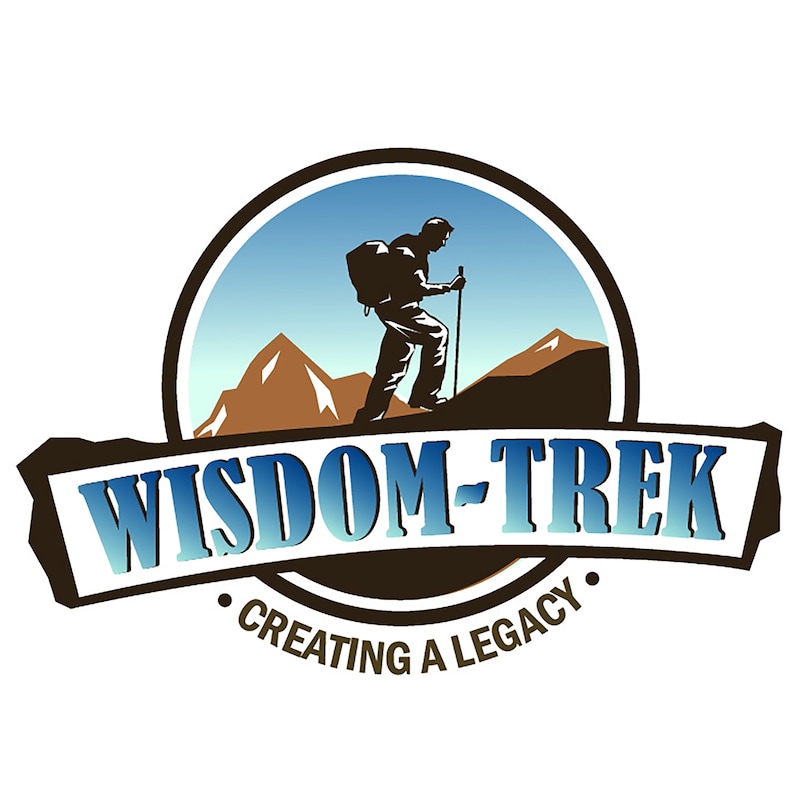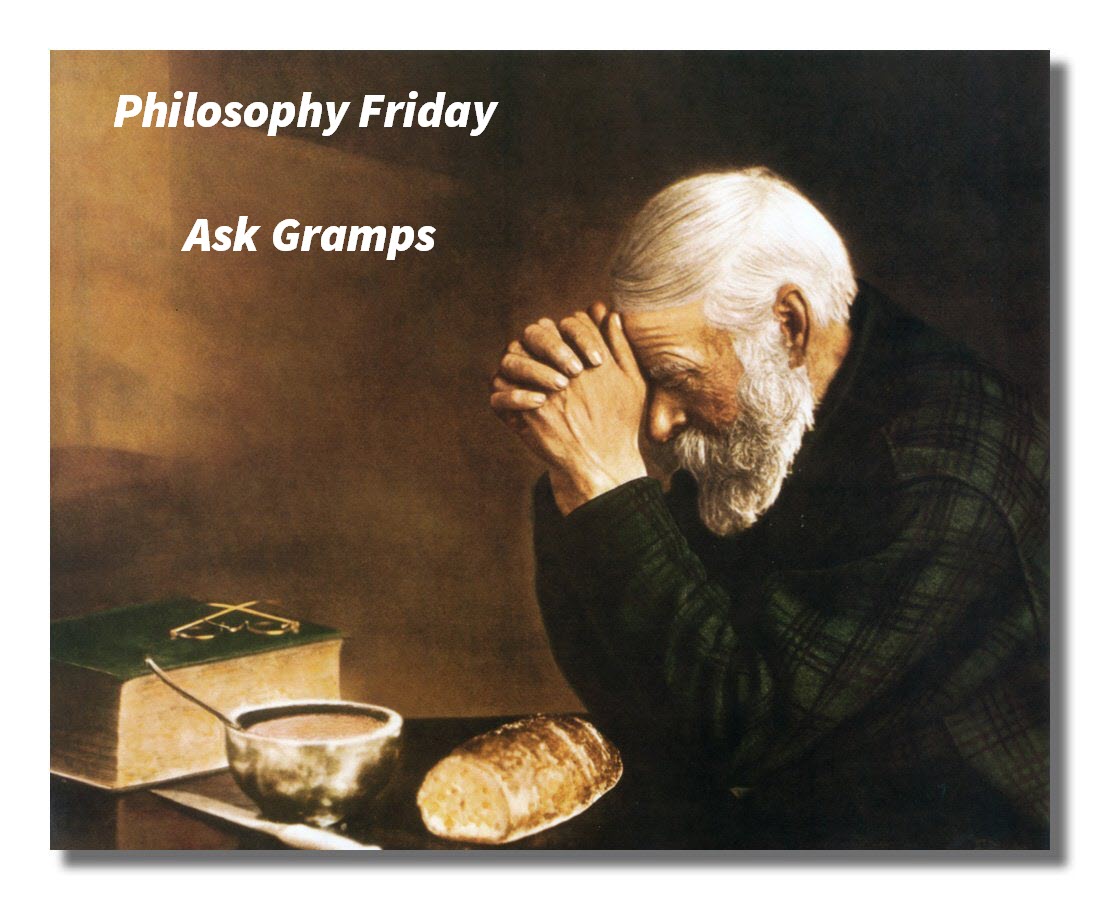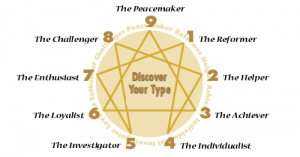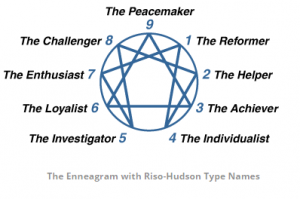
Shownotes
Wisdom-Trek / Creating a Legacy
Welcome to Day 923 of our Wisdom-Trek, and thank you for joining me.
This is Guthrie Chamberlain, Your Guide to Wisdom
How the Enneagram System Works – Ask Gramps

We are broadcasting from our studio at The Big House in Marietta, Ohio. Thank you for joining us for our five days per week wisdom and legacy building podcast. This is Day 923 of our trek, and it is time for our Philosophy Friday series. Each Friday we ponder some of the basic truths and mysteries of life and how they can impact us in creating our living legacy.
As we continue on this trek called life, sometimes we have questions about life, so our Friday trek is a time when we can “Ask Gramps.” Gramps will answer questions that you would like to ask your dad or granddad, but for whatever reason are unable to. No matter how old we are, I know that all of us would like the opportunity to ask Dad or Gramps questions about life in many areas.
Starting last week, we began a new series delving into what makes each of us respond as we do to life situations. Understanding this and how others may interpret life through their paradigm will allow us to interact with each other with love and compassion. We started last Friday with an overview of the Enneagram specifically from a Biblically based perspective.
Each week we will explore a little deeper the aspects of why the enneagram is such a powerful tool in understanding yourself and learn how it can help you to understand others that you interact with and impact. As a review, the tool that we refer to as the Enneagram (Any-a-Gram) is a circle with 9 interconnected points (“ennea” refers to 9 and “gram” referring to a drawing). See a representation of it below.
As I mentioned last week, throughout our personal life and business careers over the past 40 years, Paula and I have both used and marketed personality profile tools such and DISC, Myers Briggs, and Profiles International hiring and management tools. While we think these tools are very useful, especially in a business or ministry situation, we also found that they were somewhat limited and focused primarily on outward personality traits and not core behavior traits.
When I discovered the depth of the Enneagram, it opened up a new horizon of understanding of myself first and also helped me to understand others better. The Enneagram is the most useful tool of this type I’ve encountered for personal growth. Keep in mind, though, it is still only a tool and cannot replace or usurp the precepts that are found in God’s word.
So the questions for the next several week or months will be:
“Hey, Gramps, why do people act and react to situations and circumstances in life differently? How can I gain wisdom to better understand myself and others so that I can love, serve, and minister to them on a deeper level?”
How the Enneagram System Works

This explanation covers the basics that you will need to understand how the Enneagram works and will be especially helpful for beginners. As you will see, only a few simple concepts are needed to begin your journey of self-discovery. The Enneagram, however, is ultimately subtle and complex, as you will appreciate the more you use it in your life.
· Structure
The Enneagram’s structure may look complicated, although it is actually simple. It will help you understand the Enneagram if you also sketch it yourself.
Draw a circle and mark nine equidistant points on its circumference. Designate each point by a number from one to nine, with nine at the top, for symmetry and by convention. Each point represents one of the nine basic personality types.
The nine points on the circumference are also connected with each other by the inner lines of the Enneagram. Note that points Three, Six, and Nine form an equilateral triangle. The remaining six points are connected in the following order: One connects with Four, Four with Two, Two with Eight, Eight with Five, Five with Seven, and Seven with One. These six points form an irregular hexagram. The meaning of these inner lines will be discussed in subsequent podcasts.
· Your Basic Personality Type
From one point of view, the Enneagram can be seen as a set of nine distinct personality types, with each number on the Enneagram denoting one type. It is common to find a little of yourself in all nine of the types, although one of them should stand out as being closest to yourself. This is your basic personality type.
Everyone emerges from childhood with one of the nine types dominating their personality, with inborn temperament and other prenatal factors being the main determinants of our type. This is one area where almost all of the major Enneagram authors agree—we are born with a dominant type. Subsequently, this inborn orientation largely determines the ways in which we learn to adapt to our early childhood environment. It also seems to lead to certain unconscious orientations toward our parental figures, but why this is so, we still do not know.
In any case, by the time children are four or five years old, their consciousness has developed sufficiently to have a separate sense of self. Although their identity is still very fluid, children begin to establish themselves and find ways of fitting into the world on their own at this age.
Thus, the overall orientation of our personality reflects the totality of all childhood factors (including genetics) that influenced its development.
Several more points can be made about the basic type itself.
- People do not change from one basic personality type to another.
- The descriptions of the personality types are universal and apply equally to males and females since no type is inherently masculine or feminine.
- Not everything in the description of your basic type will apply to you all the time because you constantly fluctuate among the healthy, average, and unhealthy traits that make up your personality type.
- The Enneagram uses numbers to designate each of the types because numbers are value-neutral—they imply the whole range of attitudes and behaviors of each type without specifying anything either positive or negative. Unlike the labels used in psychiatry, numbers provide an unbiased, shorthand way of indicating a lot about a person without being pejorative.
- The numerical ranking of the types is not significant. A larger number is no better than a smaller number; it is not better to be a Nine than a Two because nine is a bigger number.
- No type is inherently better or worse than any other. While all the personality types have unique assets and liabilities, some types are often considered to be more desirable than others in any given culture or group. Furthermore, for one reason or another, you may not be happy being a particular type. You may feel that your type is “handicapped” in some way.
As you learn more about all the types, you will see that just as each has unique capacities, each has different limitations. If some types are more esteemed in Western society than others, it is because of the qualities that society rewards, not because of any superior value of those types. The ideal is to become your best self, not to imitate the assets of another type.
· Identifying Your Basic Personality Type
As you think about your personality, which of the following nine roles fits you best most of the time? Or, to put it differently, if you were to describe yourself in a few words, which of the following word clusters would come closest?
 The Enneagram with Riso-Hudson Type Names
The Enneagram with Riso-Hudson Type Names
These one-word descriptors can be expanded into four-word sets of traits. Keep in mind that these are merely highlights and do not represent the full spectrum of each type.
Type One – The Reformer is principled, purposeful, self-controlled, and perfectionistic.
Type Two – The Helper is generous, demonstrative, people-pleasing, and possessive.
Type Three – The Achiever is adaptable, excelling, driven, and image-conscious.
Type Four – The Individualist is expressive, dramatic, self-absorbed, and temperamental.
Type Five – The Investigator is perceptive, innovative, secretive, and isolated.
Type Six – The Loyalist is engaging, responsible, anxious, and suspicious.
Type Seven – The Enthusiast is spontaneous, versatile, acquisitive, and scattered.
Type Eight – The Challenger is self-confident, decisive, willful, and confrontational.
Type Nine – The Peacemaker is receptive, reassuring, complacent, and resigned.
We will wrap up for today at this point. Next Friday we will explore what is referred to as The Centers or Triads where the nine points are grouped into three centers containing three points or types.
While the Enneagram is a powerful tool to help us understand ourselves better and also understand the perspective of others better, ultimately it should drive us to have more love and compassion both for ourselves and others. We must realize that our source of truth is from God and can be found in His Word. As we are told in Psalm 25:5, “Lead me by your truth and teach me, for you are the God who saves me. All day long I put my hope in you.”
Join us again next Friday as we drill down on The Centers of the Enneagram on our Ask Gramps episode. The information that we explore will allow you to unlock who you are as we travel on our trek of life and discover more about yourself and others as you impact God’s kingdom. I know you will find these insights interesting, practical, and profitable in living a rich and satisfying life.
Our next trek is Mediation Monday where we will help you reflect on what is most important in life. So encourage your friends and family to join us and then come along on Monday for another day of Wisdom-Trek, Creating a Legacy.

If you would like to listen to any of the past 922 daily treks or read the associated journals, they are all available at Wisdom-Trek.com. I encourage you to subscribe to Apple Podcast or Google Play so that each day’s trek will be downloaded automatically.
Thank you for allowing me to be your guide, mentor, and most of all your friend as I serve you through the Wisdom-Trek podcast and journal.
As we take this trek together, let us always:
- Live Abundantly (Fully)
- Love Unconditionally
- Listen Intentionally
- Learn Continuously
- Lend to others Generously
- Lead with Integrity
- Leave a Living Legacy Each Day
I am Guthrie Chamberlain reminding you to Keep Moving Forward, Enjoy Your Journey, and Create a Great Day Everyday! See you on Monday!